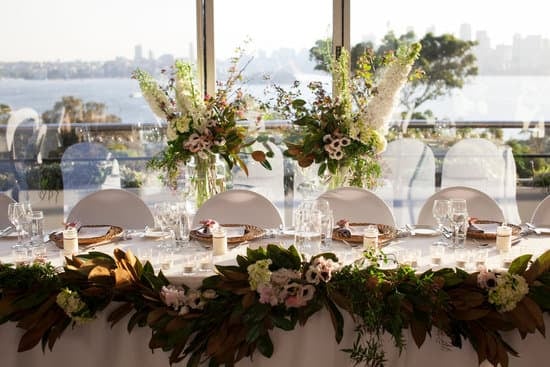What does a white wedding dress mean? The white wedding dress has been a symbol of purity, innocence, and tradition for centuries, but its meaning has evolved over time. From ancient times to modern day, the white wedding dress has held different cultural significances around the world. This article explores the history and tradition of white wedding dresses, as well as the symbolism and personal interpretations behind this iconic bridal attire.
The tradition of wearing a white wedding dress dates back to ancient times, with the color white symbolizing purity and innocence. However, the meaning of the white wedding dress has changed over the years, influenced by cultural traditions and historical figures such as Queen Victoria. This evolution has led to different interpretations of the symbolism behind wearing a white wedding dress.
In this article, we will delve into the history and tradition of white wedding dresses, exploring its symbolism of purity, innocence, and tradition. We will also examine how the significance of the white wedding dress varies across different cultures around the world. Additionally, we will discuss how Queen Victoria’s influence changed the game for bridal fashion and how some brides are breaking tradition by opting for non-white wedding dresses with their own personal meanings.
Symbolism of White
The tradition of wearing a white wedding dress dates back to ancient times, symbolizing purity and innocence. But what does a white wedding dress mean in modern times? The color white has long been associated with cleanliness, virtue, and the beginning of a new chapter in life.
In the context of a wedding, a white dress represents the purity of the bride and her commitment to her partner. It reflects the hope for a fresh start and the promise of a lifelong union.
In many cultures, white is also considered to be the color of spiritual enlightenment and perfection. It signifies the bride’s willingness to embark on this new journey with an open heart and a clear conscience. While some may argue that the symbolism is outdated or restrictive, others view it as a timeless representation of love, sincerity, and devotion.
The tradition of wearing white on their wedding day has evolved over time and has even been challenged by those who opt for non-white dresses. Despite this shift, the significance of white as a symbol for purity and innocence remains deeply ingrained in Western wedding traditions. Couples continue to embrace this symbolism as they exchange vows and celebrate their commitment to one another.
| White Wedding Dress Symbolism | Meaning |
|---|---|
| Purity | Represents purity and innocence |
| Tradition | Symbolizes tradition and new beginnings |
| Cultural significance | White holds different meanings in various cultures around the world |
Evolution of the White Wedding Dress
The white wedding dress has become a timeless tradition that has evolved over many centuries. From ancient times to modern day, the style and symbolism of the white wedding dress have changed significantly.
In ancient times, brides would wear colorful dresses made from rich fabrics such as velvet, silk, or fur. White was not always the color of choice for bridal attire. It wasn’t until the 19th century that Queen Victoria of England popularized the trend of wearing a white wedding dress when she married Prince Albert in 1840. This pivotal moment in history marked the beginning of the widespread tradition of white wedding dresses.
The evolution of the white wedding dress can also be seen in its design and style. In early centuries, brides’ dresses were often a reflection of their social status and wealth, featuring intricate embroidery, lavish fabrics, and elaborate accessories. Today, white wedding dresses come in various styles such as ballgowns, mermaid silhouettes, and A-line skirts with different necklines and embellishments to suit every bride’s personal taste.
- The tradition of wearing a white wedding dress
- Queen Victoria’s influence on the popularity of white wedding dresses
- Evolution in design and style from ancient times to modern day
Cultural Significance
White wedding dresses have held symbolic significance in many cultures around the world, representing different meanings and traditions unique to each society. Here are some examples of the cultural significance of white wedding dresses:
- In Western cultures, such as in the United States and European countries, white wedding dresses traditionally symbolize purity and innocence. This tradition dates back to the Victorian era when Queen Victoria wore a white dress for her wedding in 1840, setting the trend for future brides.
- In Eastern cultures, such as in China and India, red is the traditional color for brides as it symbolizes luck, happiness, and prosperity. However, modern brides in these cultures are embracing white wedding dresses as well, influenced by Western customs.
- In some African cultures, white symbolizes joy and celebration. Brides may opt for traditional white garments or incorporate elements of white into their wedding attire to signify happiness on their special day.
The use of white in wedding dresses reflects each culture’s beliefs and values surrounding marriage and the significance placed on different colors. As global trends continue to influence bridal fashion, brides from various cultural backgrounds are incorporating both traditional customs and contemporary styles into their wedding attire.
Ultimately, what does a white wedding dress mean? The meaning varies widely across different cultures and individuals. For some, it represents purity and innocence; for others, it signifies joy and celebration. Regardless of its interpretation, the symbolism of the white wedding dress remains an integral part of weddings around the world.
The Influence of Queen Victoria
When it comes to the history and tradition of white wedding dresses, one cannot overlook the profound influence of Queen Victoria’s own choice of attire for her wedding in 1840. Up until then, it was not customary for brides to wear white on their wedding day. However, Queen Victoria’s decision to wear a white satin gown adorned with Honiton lace sparked a trend that still continues today.
Queen Victoria’s choice of a white wedding dress symbolized purity and innocence, setting a new standard for bridal attire. The significance of her dress was not lost on the public, and soon, white became the go-to color for brides in Western cultures. This historical shift not only cemented the symbolism of white as purity and virtue but also established the white wedding dress as a timeless tradition.
Over time, Queen Victoria’s influence spread beyond Western cultures, and today, many brides around the world opt for white wedding dresses as a symbol of their purity and innocence as they enter into marriage. Despite societal changes and evolving attitudes towards marriage and tradition, the influence of Queen Victoria’s white wedding dress remains strong to this day.
| White Wedding Dresses | Significance |
|---|---|
| Symbolize purity and innocence | Setting a new standard for bridal attire |
| Influenced brides around the world | Became a timeless tradition |
Breaking Tradition
When we think of weddings, we often picture a bride walking down the aisle in a beautiful white wedding dress. However, in recent years, there has been a growing trend of breaking tradition and opting for non-white wedding dresses. This shift in bridal fashion has opened up a new conversation about the meaning behind the color of a wedding dress and the significance it holds for different brides.
The Rise of Non-White Wedding Dresses
In the past, white was considered to be the traditional color for wedding dresses, symbolizing purity and innocence. However, as modern brides are challenging conventional norms, we are seeing an increasing number of non-white wedding dresses grace the aisle. From soft pastels to bold jewel tones, brides are embracing colors that reflect their personal style and aesthetic.
The Meaning Behind Non-White Wedding Dresses
For many brides, choosing a non-white wedding dress is a way to express their individuality and break away from traditional expectations. Each color holds its own symbolism and meaning, allowing brides to convey their unique personality and emotions through their choice of attire. Whether it’s a soft blush dress representing romance or a daring black gown symbolizing sophistication, non-white wedding dresses hold significant meaning for each bride who wears them.
Redefining Tradition
The rise of non-white wedding dresses has sparked conversations about redefining what it means to be a bride and challenging long-standing traditions. As more brides opt for colored gowns, they are contributing to a shift in how we perceive bridal fashion and the symbolism behind the wedding dress. This movement towards diversity and individuality is reshaping the narrative of what it means to walk down the aisle in something other than white.
Personal Interpretation
For many brides, the decision to wear a white wedding dress goes beyond tradition and symbolism. It’s a deeply personal choice that holds different meanings for each woman. While some may embrace the traditional significance of purity and innocence, others view their white wedding dress as an expression of their individual style and personality. Here, we explore the various personal interpretations of what wearing a white wedding dress means to different brides.
Symbolism of Tradition and Purity
For some brides, the choice to wear a white wedding dress is rooted in the traditional symbolism of purity and innocence. They see the white gown as a reflection of their commitment to entering into marriage with a clean slate, free from past experiences and ready to embark on a new journey with their partner. This interpretation often aligns with cultural or religious beliefs that place importance on chastity and virtue.
Expression of Style and Personality
On the other hand, many modern brides see their white wedding dress as an opportunity to showcase their unique style and personality. While embracing the tradition of wearing white, these brides infuse their gowns with personalized details that reflect who they are as individuals. Whether it’s through intricate lace patterns, unconventional silhouettes, or non-traditional accessories, these brides use their white wedding dress as a canvas for self-expression.
Sentimental Value
For some brides, wearing a white wedding dress holds sentimental value that transcends its traditional symbolism. It may be a nod to family traditions or a way to honor loved ones who have worn similar gowns in the past. The act of wearing a white wedding dress becomes an emotional connection to one’s heritage and lineage, making it more than just a fashion choice but rather a meaningful tribute.
Ultimately, what wearing a white wedding dress means varies from one bride to another, serving as both an acknowledgment of tradition and an opportunity for personal expression. Whether steeped in symbolism or driven by individual style, the significance of the white wedding dress remains deeply personal for each bride.
Conclusion
In conclusion, the white wedding dress has stood the test of time as a symbol of purity, innocence, and tradition. From its origins in ancient times to its modern-day significance, the white wedding dress continues to hold a special place in wedding ceremonies around the world. While the cultural significance and interpretations of the white wedding dress may vary from one society to another, its timeless symbolism remains unaltered.
The influence of Queen Victoria’s white wedding dress cannot be understated, as it played a pivotal role in solidifying the color white as the traditional choice for brides. However, there has been an increasing trend in breaking tradition with non-white wedding dresses that carry their own unique meanings and significance for brides. Despite this shift, the underlying symbolism and meaning of the white wedding dress remain steadfast for many couples.
Ultimately, what wearing a white wedding dress means to different brides is deeply personal and subjective. Some may view it as a representation of purity and new beginnings, while others may simply appreciate its classic elegance. Regardless of individual interpretations, the white wedding dress continues to be a powerful symbol of love and commitment in marriage ceremonies across various cultures and traditions.
Frequently Asked Questions
What Does White Wedding Dress Symbolize?
The white wedding dress is traditionally seen as a symbol of purity, innocence, and virginity. It is often associated with a fresh start and the beginning of a new chapter in the bride’s life.
What Does the Bible Say About a White Wedding Dress?
While the Bible does not specifically mention white wedding dresses, it does mention the symbolism of white. In the Bible, white is often associated with purity, righteousness, and holiness. This may be why many brides choose to wear white as they enter into a sacred union.
What Does Wearing White to a Wedding Mean?
Wearing white to a wedding can symbolize different things depending on cultural and religious beliefs. In Western cultures, it is often seen as a way for guests to show support for the bride and her pure intentions in entering marriage.
In some Asian cultures, however, wearing white to a wedding is traditionally associated with mourning and funerals, so it’s important to consider cultural context when choosing attire for a wedding.

I have been involved in marriages for over 20 years helping couples and singles understand more about them.





